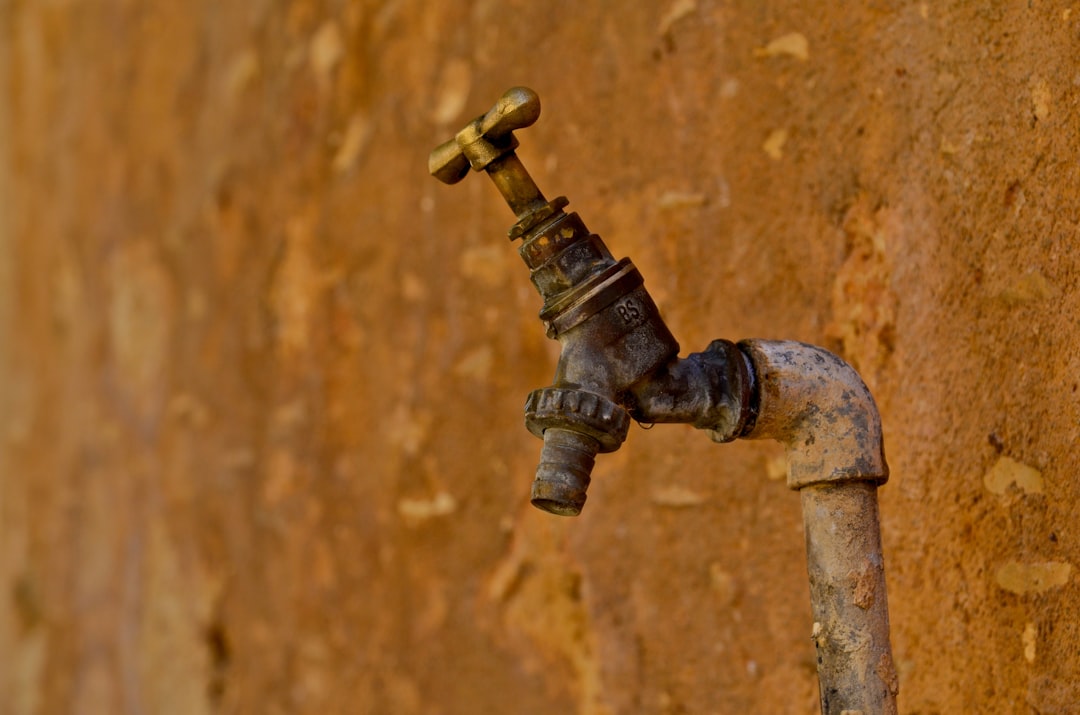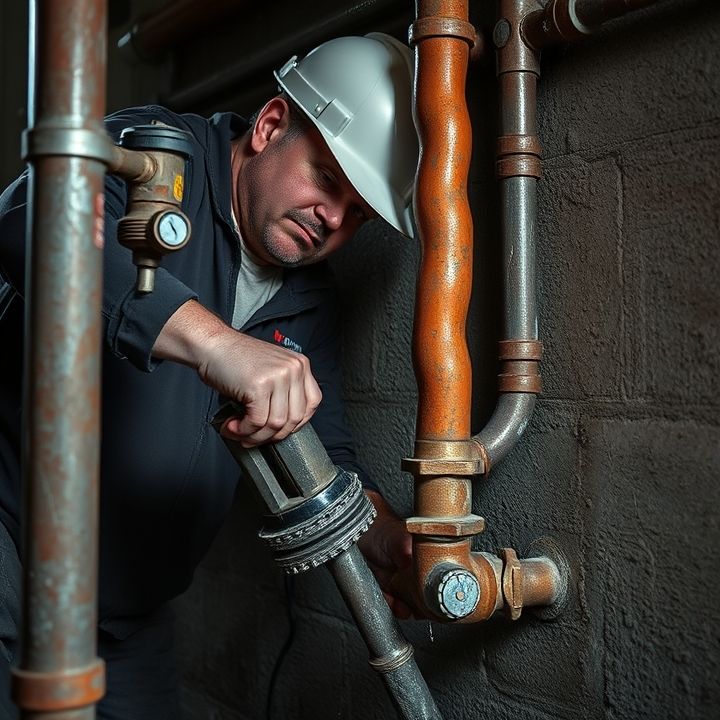Table of Contents
- Introduction
- Extreme temperature fluctuations leading to frozen pipes
- Corrosion and wear of aging plumbing materials
- Improper installation or faulty plumbing fixture installation
- Water pressure issues causing stress on pipes
- Ground movements or settling affecting underground pipes
- Blockages leading to bursts during drainage
- Physical damage from construction or landscape changes
- Poor maintenance leading to undetected leaks and failures
- Conclusion
- Frequently Asked Questions
Introduction
Imagine waking up to find water gushing from a pipe burst, ruining your home and causing thousands in damages. Unfortunately, this nightmare is more common than you might think.
In our daily lives, the plumbing system is often taken for granted, quietly doing its job behind the scenes. However, hidden dangers lurk within those walls, waiting to unleash havoc at the most inconvenient times.
From temperature fluctuations to corrosion, the threats leading to pipe bursts are not just a concern for the unprepared homeowner; they can affect anyone.
This article will take you on a journey to unveil these hidden dangers, illuminating the most common causes of pipe bursts. Recognizing these red flags can save you from potential disasters and keep your plumbing system in optimal condition. So, grab your toolbelt and get ready to fortify your home against these lurking threats!
Extreme temperature fluctuations leading to frozen pipes
Extreme temperature fluctuations can significantly contribute to the occurrence of pipe bursts, particularly during winter months. When temperatures drop suddenly, the water inside pipes can freeze, leading to dangerous blockages. As water freezes, it expands, and this expansion creates immense pressure within the pipes. If the pressure exceeds the pipe’s capacity to withstand it, a rupture will occur, resulting in leaks and potential flooding.
Additionally, the risk of frozen pipes is heightened in areas that experience rapid temperature changes, as well as in buildings that are poorly insulated. Pipes located in exterior walls, unheated spaces like attics or basements, and those subjected to drafts are especially vulnerable. Homeowners should be vigilant during sudden cold spells by ensuring their thermostats are set at a consistent temperature, allowing warm air to circulate around vulnerable pipes.
Implementing preventative measures, such as insulating pipes or allowing faucets to drip, can help mitigate the risks associated with frozen pipes. Proper preparation can save homeowners from the costly damages that follow a burst pipe.
Corrosion and wear of aging plumbing materials
Corrosion and wear of aging plumbing materials are significant contributors to pipe bursts, particularly in older homes and buildings. Over time, pipes made from materials such as iron, copper, or polybutylene can degrade due to various factors.
Corrosion occurs when metal pipes react with water or substances in the water, leading to rust formation and weakening of the pipe structure. This deterioration can create small leaks that escalate over time if left unaddressed.
Additionally, wear from water flow, pressure fluctuations, and temperature changes can lead to physical fatigue in the materials. As pipes age, they become more susceptible to cracking and eventual failure. It’s essential for homeowners to recognize the signs of aging plumbing, such as unusual water discoloration or inconsistent water pressure, which may indicate underlying issues. Regular inspections and maintenance can help identify these problems early, reducing the risk of pipe bursts and the resulting costly water damage.
Improper installation or faulty plumbing fixture installation
Improper installation or faulty plumbing fixture installation can significantly contribute to the problem of pipe bursts. When plumbing systems are not installed correctly, they can experience high levels of stress and pressure that lead to leaks and eventual bursts. For instance, pipes that are not secured properly may move or shift over time, which can weaken the joints and connections. Similarly, using the wrong type of fittings or materials can result in compatibility issues, making the system more prone to failure.
Furthermore, inadequate sealing around fixtures, such as sinks and toilets, can allow for water buildup, increasing the risk of significant leaks. Additionally, plumbing fixtures that are installed without adequate support may fail under pressure, leading to catastrophic plumbing issues. Ensuring that professional standards are followed during installation is essential for maintaining the integrity and functionality of the plumbing system. A thorough inspection and adherence to building codes can also help prevent these issues from arising.
Water pressure issues causing stress on pipes
Water pressure issues are one of the leading causes of pipe bursts, often resulting from a range of factors including municipal supply fluctuations and plumbing system design. When water pressure is too high, it exerts excessive force on the pipe walls, making them prone to leaks or ruptures. This high pressure can stem from issues such as malfunctioning pressure regulators or improper installation of pumps.
Additionally, water hammer—a sudden change in water flow that generates shock waves—can create extreme pressure spikes that can damage pipes.
Conversely, extremely low water pressure can lead to negative pressure scenarios, allowing contaminants to enter the system and potentially causing pipeline corrosion over time.
It is crucial for homeowners and property managers to monitor water pressure levels regularly and address any deviations promptly. By taking proactive measures to manage water pressure, the likelihood of experiencing pipe bursts can be significantly reduced, saving both time and costly repairs in the long run.
Ground movements or settling affecting underground pipes
Ground movements or settling can significantly impact underground pipes, leading to potential bursts. As the soil beneath and around the pipes shifts, it can exert irregular pressure on the pipe walls, weakening them over time. This shifting may result from natural factors such as erosion, soil compaction, or geological changes, as well as human activities like construction and excavation.
Moreover, heavy rainfall can saturate the ground, causing soil to expand and move, while drought conditions can lead to soil contraction. Both scenarios create a dynamic environment that places stress on the pipes. Additionally, tree roots searching for moisture can infiltrate and compromise pipes, exacerbating the risk of breaks. Aging infrastructure is particularly vulnerable, as older materials may not withstand the pressures associated with ground movement.
Preventive measures, such as regular inspections and maintenance, along with the use of more resilient piping materials, can help mitigate these risks. Understanding the relationship between ground movements and pipe integrity is essential for effective water management and infrastructure longevity.
Blockages leading to bursts during drainage
Blockages in drainage systems are one of the leading causes of pipe bursts, typically resulting from the accumulation of debris, grease, or other foreign objects. When a pipe becomes blocked, water can no longer flow freely, creating pressure that can exceed the pipe’s capacity. This excessive pressure often leads to leaks or, in severe cases, bursts.
Common culprits of blockages include tree roots that infiltrate underground pipes, leading to significant obstructions. Additionally, the buildup of grease from kitchen waste can form dense clogs that are difficult to remove. Over time, these blockages can also cause erosion or weakening of the pipe material, making them more susceptible to rupture.
Preventing blockages involves regular maintenance, such as routine inspections and cleaning of drainage systems to ensure optimal flow. Homeowners should also be cautious about what they dispose of down the drains, avoiding items like oil and fibrous foods that can contribute to clogging.
Physical damage from construction or landscape changes
Physical damage from construction or landscape changes is a significant cause of pipe bursts that homeowners and municipalities often encounter. When construction activities are underway, such as digging foundations, installing new roads, or even landscaping modifications, the underground plumbing can be unintentionally impacted. Heavy machinery can crush pipes, while the shifting earth can create pressure points that lead to cracks and fissures.
Additionally, changes in landscape, like the installation of retaining walls or extensive grading, can alter the natural flow of water, which may compound pressure on existing pipes. This can be particularly problematic in areas where older pipes are already weakened.
Furthermore, soil erosion and compaction from heavy equipment can destabilize pipeline support, while improper backfilling can leave pipes exposed to environmental stressors. These factors combined significantly increase the risk of bursts, leading to property damage and costly repairs. Understanding these risks is crucial for anyone involved in construction and landscape management.
Poor maintenance leading to undetected leaks and failures
Poor maintenance of plumbing systems is one of the leading causes of pipe bursts, often resulting in undetected leaks and failures. Over time, pipes can deteriorate due to a lack of regular inspections and upkeep. Corrosion, sediment buildup, and wear and tear can weaken pipe integrity, making them more susceptible to bursting. Small leaks, if not identified and addressed promptly, can escalate into significant issues, increasing pressure within the system and leading to catastrophic failures.
Homeowners and property managers should implement a regular maintenance schedule that includes checking for signs of leaks, monitoring water pressure, and ensuring that all plumbing fixtures are functioning correctly. Additionally, seasonal checks can prevent complications arising from temperature fluctuations, which can cause pipes to expand and contract, increasing the risk of cracks. Without proactive maintenance, hidden leaks can remain unnoticed, causing water damage and leading to costly repairs down the line. Investing time and resources in proper maintenance can significantly extend the lifespan of plumbing systems and mitigate the risks associated with pipe bursts.
Conclusion
In conclusion, understanding the common causes of pipe bursts is essential for homeowners and property managers alike. From extreme temperature fluctuations leading to frozen pipes to the impacts of aging infrastructure, each factor plays a pivotal role in maintaining plumbing integrity. Regular maintenance, inspections, and proactive measures can mitigate these risks and save you from costly repairs and water damage. If you suspect that your plumbing system is at risk of failure or if you have questions regarding maintenance and prevention, don’t hesitate to reach out for professional help.
Call us at 573-555-2121 for expert plumbing assistance today!

